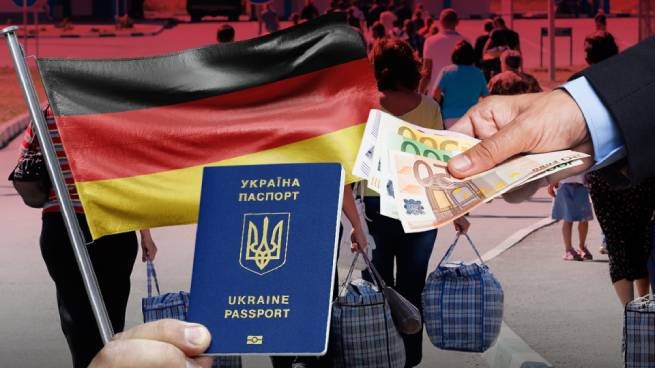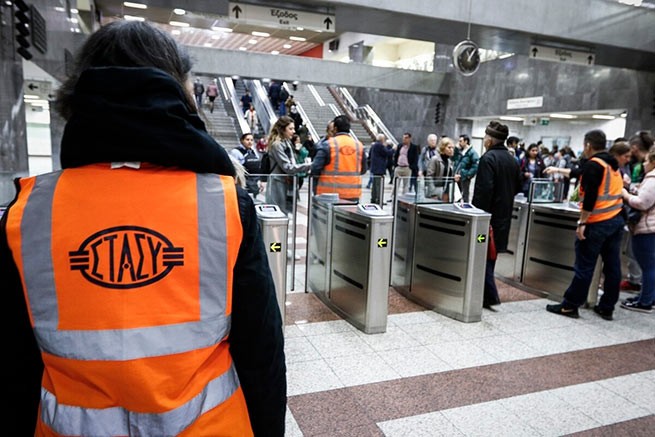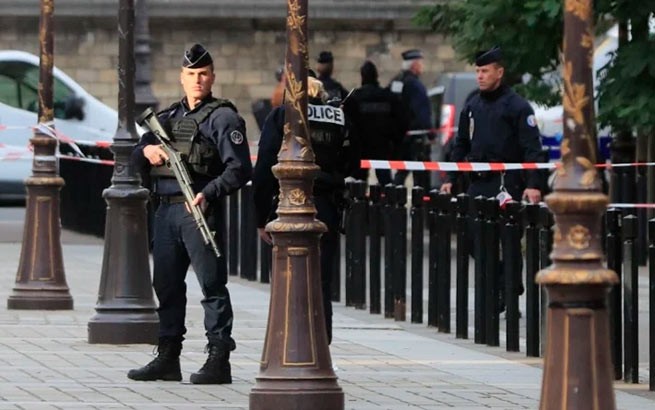The Russian Embassy in Greece presented a commemorative album “Russian and Soviet military graves in Greece”. The event took place in the building of the Russian Center for Science and Culture in Athens.
Presentation at the RCSC Russian and Soviet burials in Greece. Speech by the post of the Russian Federation in Greece Maslov.
Posted by Russian Athens – Russian Athens on Monday, June 21, 2021
Speech by Russian Ambassador to Greece Andrey Maslov
The multi-page illustrated edition is based on materials collected during the inventory and certification of burial places.
The album contains information about all known domestic places of military burials in Greece. The publication covers the time period from the Battle of Navarino in 1827 to World War II, contains lists of names of military personnel, information on the exact location of memorials and a description of their current state, photographs, drawings, and more.
The work was carried out by the Russian Embassy in Greece, the Office of the Military Attaché, the Russian Consulate General in Thessaloniki with the active assistance of search activists from among compatriots.
As Russian Ambassador to Greece Andrei Maslov emphasized, this presentation was included in the program of cultural events within the framework of the Russia-Greece Year of History.
“In 2017, a council for military memorial work was created at the embassy,” the diplomat said. – At one of the meetings, we, after consulting, decided to start work on creating an interactive map of Russian and Soviet military graves. The embassy and the military attaché, together with our consulate general in Thessaloniki, have done a lot of work, and we have created an interactive map that can be accessed, including from the website of our embassy, and plot routes to each of the objects. And we found out like that, as of today, 18 “.
According to the head of the Russian diplomatic mission, this does not mean that this work has been completed. “Memorial work is like history, points are not needed here, everything develops, some new sources appear, some other objects may appear,” Andrei Maslov emphasized.
The diplomat said that after the interactive map was created, the embassy decided to publish a war memorial album, colorful and visual. “Such work on inventory and certification of all these objects was carried out here for the first time,” he stressed. “It has never been held before and, of course, it could not have been successfully carried out without the initiative and very useful assistance that social activists from the ranks of our compatriots, who know the situation well and deeply, rendered to us”.
The War Memorial Album contains photographs, a brief description of monuments, tombstones or burials, as well as personal information about the deceased Russian soldiers from the time of the Battle of Navarino in 1827 to the period of World War II. The text is accompanied by a QR link to an electronic map with the exact location of a particular monument.
Attache Prikhodko, on rewriting history
Posted by Russian Athens – Russian Athens on Monday, June 21, 2021
Defense Attaché Major General Alexander Prikhodko’s speech
As Defense Attaché Major General Aleksandr Prikhodko noted, at the moment, before everyone’s eyes, attempts are being made to rewrite history. “Everyone saw perfectly well how SS units and SS units were marching on the territory of Ukraine, the Baltic countries, the local authorities looked at everything, the European Union closed its eyes to all this, and we did not hear any shouts, nothing,” he said. “That is why this kind of“ creeping revanchism, ”“ creeping neo-fascism, ”begins to raise its head. Therefore, our task is to tell the truth about this at all levels, – continued the head of the Russian military attaché. “And, of course, to discover more and more names of heroes, such as we have here, and to perpetuate them.”
For the main temple of the armed forces of the Russian Federation, in Greece and other countries, earth was collected from the graves of Soviet soldiers. It does not matter for us what name is written there. Russian, Armenian, Ukrainian. The attaché asked everyone who knows about the burials of Soviet soldiers in Greece to inform the embassy.
Posted by Russian Athens – Russian Athens on Monday, June 21, 2021
Defense Attaché Major General Alexander Prikhodko’s speech
Defense Attaché Major General Aleksandr Prikhodko noted that “the embassy and the military attaché are doing a lot of joint work to perpetuate the memory, search for graves, and keep various monuments and steles in order.” He said that in order to perpetuate the memory of the heroes, employees of the embassy and attache traveled throughout Greece, toured all the monuments, took land from the burial sites of Russian and Soviet soldiers and brought it to Moscow.
Burial places of Russian and Soviet soldiers in Greece
In the first place among the burials, which are given in the album, is the Russian naval necropolis in the city of Piraeus. For more than 100 years of its existence, about 1000 people have been buried on it, including 400 military officials, as well as representatives of the diplomatic mission, clergymen, members of prominent Russian families in exile. Most of the graves were destroyed in the 70s of the XX century during the pro-fascist junta of “black colonels”. 100 out of about 400 graves have been preserved and restored by the Russian Embassy.
There is one more burial in the central area of Attica. Soviet soldier Nikolai Shevel (12/26/1944) was buried in the British Allied cemetery.
In Thessaloniki, in the Russian section of the Zeytenlik allied cemetery, there are burials of Russian soldiers of the Macedonian front of the First World War and Soviet partisans – fighters of the Greek anti-fascist resistance movement during the Second World War. There are buried 396 Russian soldiers during the First World War and 10 Soviet soldiers who fought in the Greek partisan detachments. On the site there is a stele with the Russian coat of arms, a bronze laurel wreath and an inscription in Russian and Greek: “Eternal memory to the soldiers of Russia who fell on the land of Greece.”
There are several graves on the island of Crete. In particular, at the municipal cemetery of St. Luke in the city of Chania, a memorial has been erected in memory of 14 sailors of the Russian Imperial Navy buried in 1897-1911, participants in the international peacekeeping operation of 1897-1909 that followed the Greco-Turkish war of 1897, and members of their families ( only 20 people). There, a marble slab was installed on the mass grave of 33 Soviet soldiers, whose names have not survived. According to reports, they were taken to the island as prisoners of war, escaped and joined the Greek partisan detachments that fought against the fascist invaders.
Speech by the head of the group for cultural and humanitarian cooperation Fyodor Andreevich Kalaydov.






More Stories
The Olympic flame will arrive in Athens on Saturday. Which roads will be blocked?
A participant in the Olympic Truce Road race has died
Metropolitan Seraphim spoke out against celebrating Easter together with Catholics